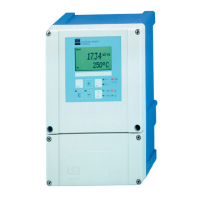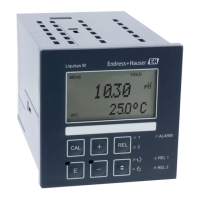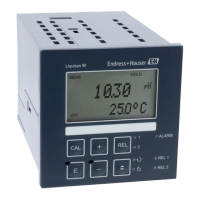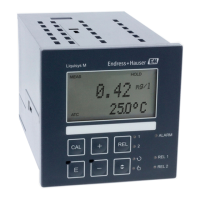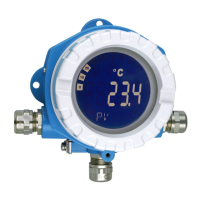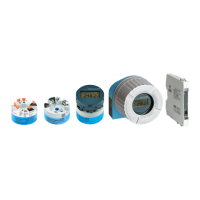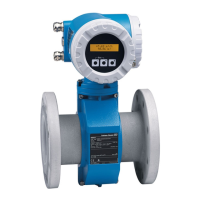Commissioning Liquisys M CLM223/253
36 Endress+Hauser
6.4.2 Setup 2 (Temperature)
The temperature coefficient specifies the change in conductivity per degree of temperature
change:
with
(T) = conductivity at process temperature T
(T
0
) = conductivity at reference temperature T
0
The temperature coefficient depends on the chemical composition of the medium and the
temperature itself.
In order to compensate for this dependence, four different compensation types can be
selected in the transmitter:
• Linear temperature compensation
• NaCl compensation
• Ultrapure water compensation NaCl (neutral compensation)
• Ultrapure water compensation HCl (acid compensation)
• Temperature compensation with table
Linear temperature compensation
The change between two temperature points
is considered to be constant, i.e. =const.
The value can be edited for the linear
compensation type. You can edit the
reference temperature in field B7, the factory
setting is 25 °C (77 °F).
a0008945
Fig. 22: Linear temperature compensation
* uncompensated conductivity
NaCl compensation
The NaCl compensation (according to IEC
60746) is based on a fixed nonlinear curve
that defines the relationship between the
temperature coefficient and the temperature.
This curve is used for lower concentrations of
up to approx. 5 % NaCl.
a0008939
Fig. 23: NaCl compensation
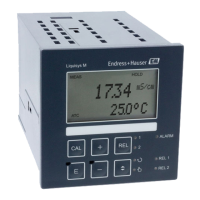
